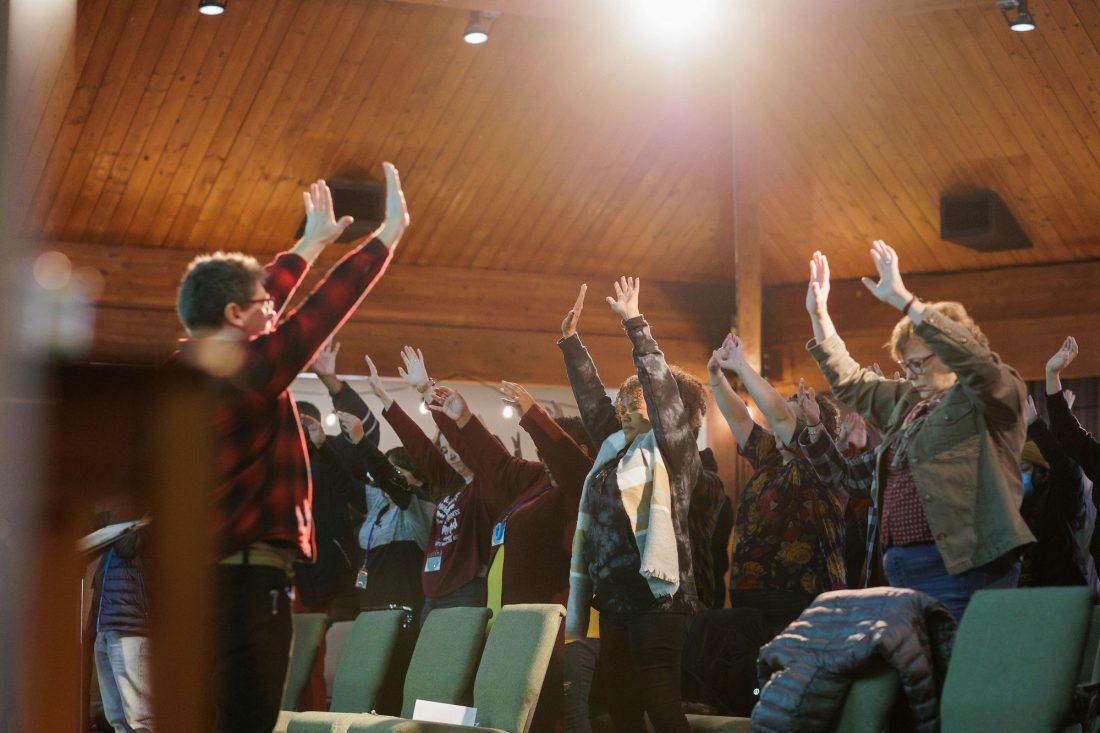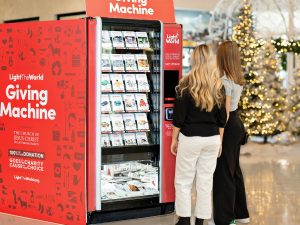Delegates encouraged to connect with God to “Tell the Story.”
The Western Territorial Creative Arts Conference, March 11–13, challenged delegates to “Tell the Story” amid the towering pine trees and burbling brooks of The Salvation Army’s Camp Kuratli at Trestle Glen in Boring, Oregon. Salvationists, aged 18–60-plus, attended from around the territory to engage in one of five creative tracks: drama, visual arts, writing, praise-team leading and dance.
“When we create, we are making culture—are making sense of our world,” said Joy Yi, who organized the conference with the Territorial Music Department. “Rather than just consuming culture, we want to create culture in order to tell the redemptive and restorative story of God. We want to encourage the churches to create in prayerful and excellent ways…in ways that appeal to our imagination and ignite a sense of wonder for worship and in our everyday walk with the Lord.”
Speaker, author and advocate for the arts in church J. Scott McElroy led the main sessions Friday night and Saturday morning. Guest instructors included Canada and Bermuda Territorial New Media Youth and Worship Arts Specialist Simon Gough for Praise and Worship Leading; Coeur d’Alene Kroc Center Corps Officer Major Ronda Gilger for Visual Arts; Theater for the Thirsty for Drama; Western Territorial Editor in Chief and Literary Secretary Christin Thieme for Writing; and New Jersey Divisional Arts and Special Events Director Olivia Renkel for Dance.
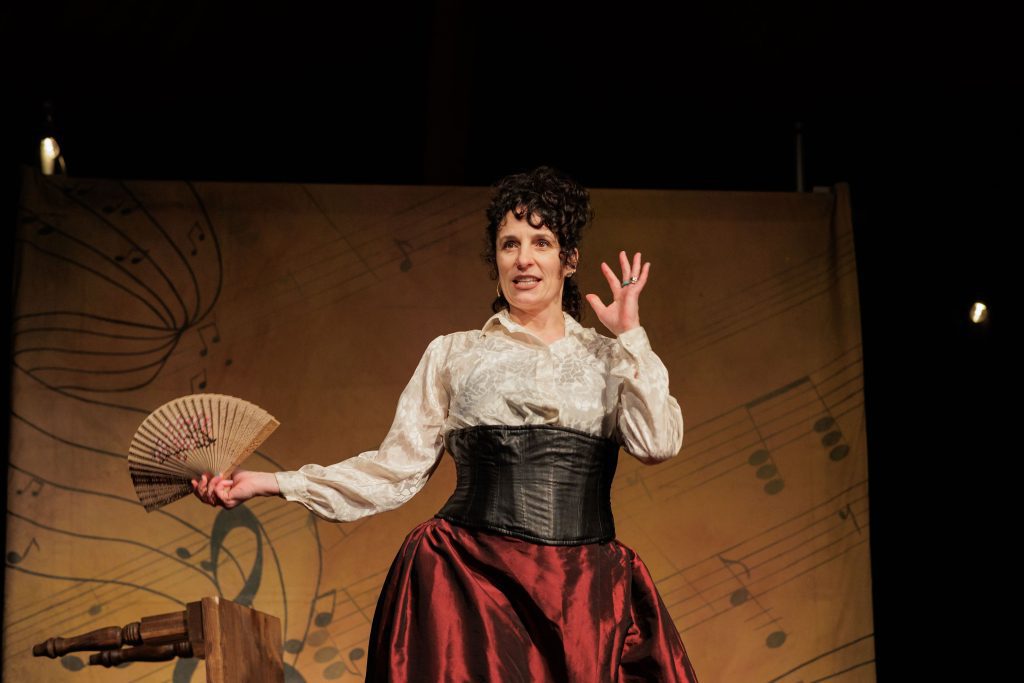
On Friday, McElroy explored how individuals can locate their own stories within God’s larger story. “We have the opportunity to collaborate with God in our creations by hearing his voice and understanding his unconditional love,” he said.
During this interactive session, delegates had time to connect with God, listening for his voice and writing in a prayer journal; several then shared what God said to them. In another exercise, “Prayer Art Ministry,” each delegate sat with someone they didn’t know, asking God to speak to them about that person. They expressed God’s message with a picture or with words.
“We know God is always around, but practicing that with another person—it’s just amazing,” San Diego Kroc Center delegate Katherine Winter said. “It shows that if we ever want to converse with God, he’s always there. Anytime. Anywhere.”
McElroy offered three keys to discovering our individual story: identity—finding both our personal calling and our Christian calling; perspective—keeping our sense of wonder and becoming like a little child seeking heaven (Matt. 18:3); and alignment—staying on God’s path, using the Lord’s Prayer to stay on track.
During Saturday’s main session, McElroy spoke about the power of the arts to create change, and how the church can harness this power.
“Through art we can show compassion,” he said. “This is an underutilized asset in the church. Art, music, poetry [and] drama convey God’s love when words fail. Words often fail…Art can create bridges to wonder.”
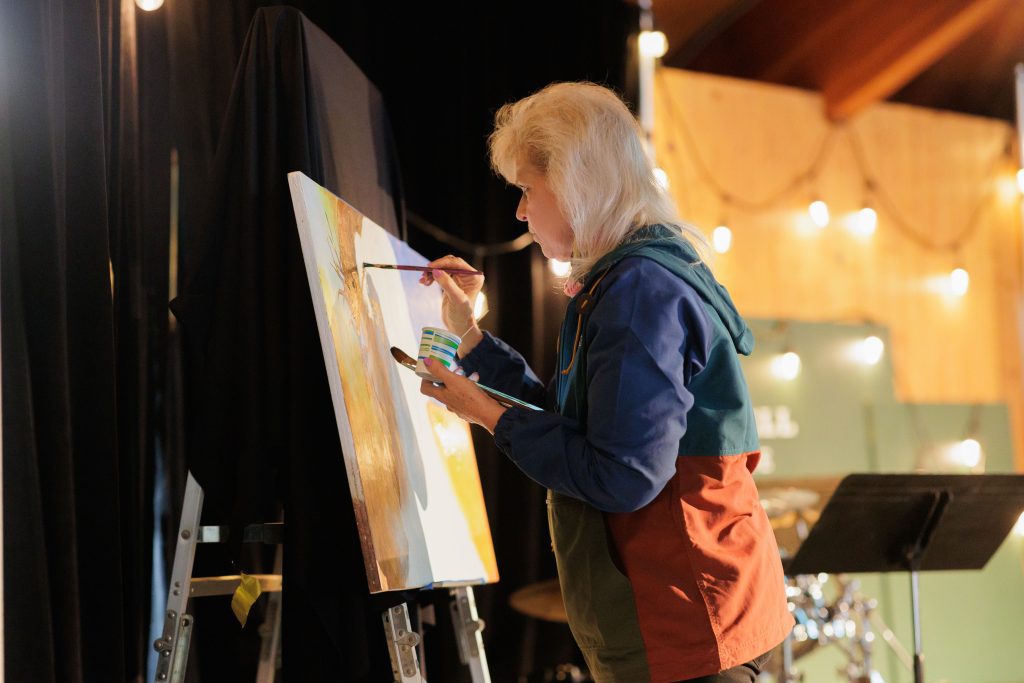
During the meeting, Gilger did live painting, creating an intercessory piece for Ukraine. Renkel offered a physical prayer for Ukraine through dance.
“This is what compassion through the arts can look like in a church service,” McElroy said. “It’s an act of faith, taking a risk. The Holy Spirit can speak to you through the art.”
Saturday’s highlights included a vocal solo from 12-year-old Obadiah Gamble, who performed “The Good Part,” a song he wrote and produced at age 10, when the pandemic derailed his family’s travel plans. That evening, his parents, Jeremiah and Vanessa Gamble—Theater for the Thirsty—performed their latest original musical, “This is My Story, This is My Song,” a rediscovery of beloved hymns and the stories of those who created them.
Form vs. substance
Saturday evening, small groups tackled questions around form vs. substance. What use is form without substance? And what happens to substance when it’s presented ineffectively? Before their discussions, delegates watched a video of Dr. Alicia Britt Chole, who broke down the distinction between the two.
“Form without substance is useless to meet someone’s needs,” she said. “But substance without any form is unusable. You need both; they are dependent but distinct.”
This relates directly to the church and its forms of worship. The substance inspiring worship—the gospel—is everything. But do the forms, often the creative arts, convey it successfully? Has the emphasis shifted from the substance to the form?
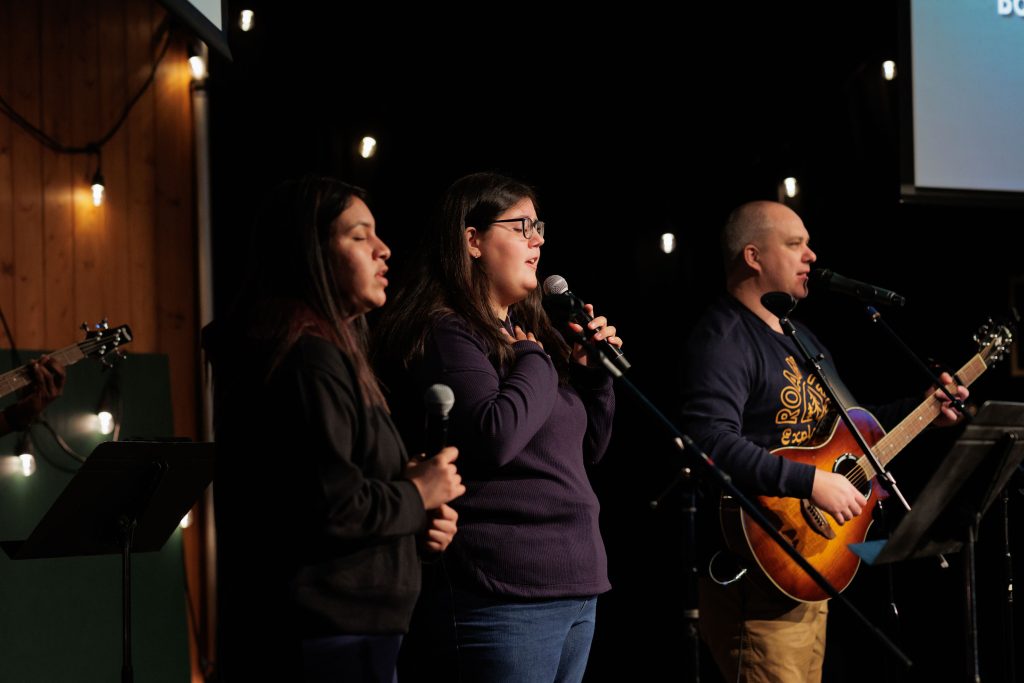
“How easy it is to confuse…singing with worship,” Chole said. “Reading the Bible with obeying God’s Word. Going to church with being the church. Experiencing God’s presence for actually being intimate with God as a person.”
Delegates debated questions surrounding form vs. substance including: Can substance be revitalized in a form? Since forms of worship and the creative arts are subjective, who decides what stays and what goes, and why? Is church tradition meaningful? How much weight should it have?
“[I learned] about incorporating different creative worship mediums that you are not normally comfortable with,” said El Centro (California) Corps delegate Elida Doria. “But it’s not about you. It’s about God…It’s about the substance, and it always needs to be there with [the form], because one without the other, it just doesn’t work.”
The delegates had a lot to say—they needed several reminders to disband and head to the next activity. The small groups met again Sunday morning to consider the danger of slipping from God-worship to art-worship. They also discussed what constitutes obedience in worship, what acts of service look like and how to prepare for worship.
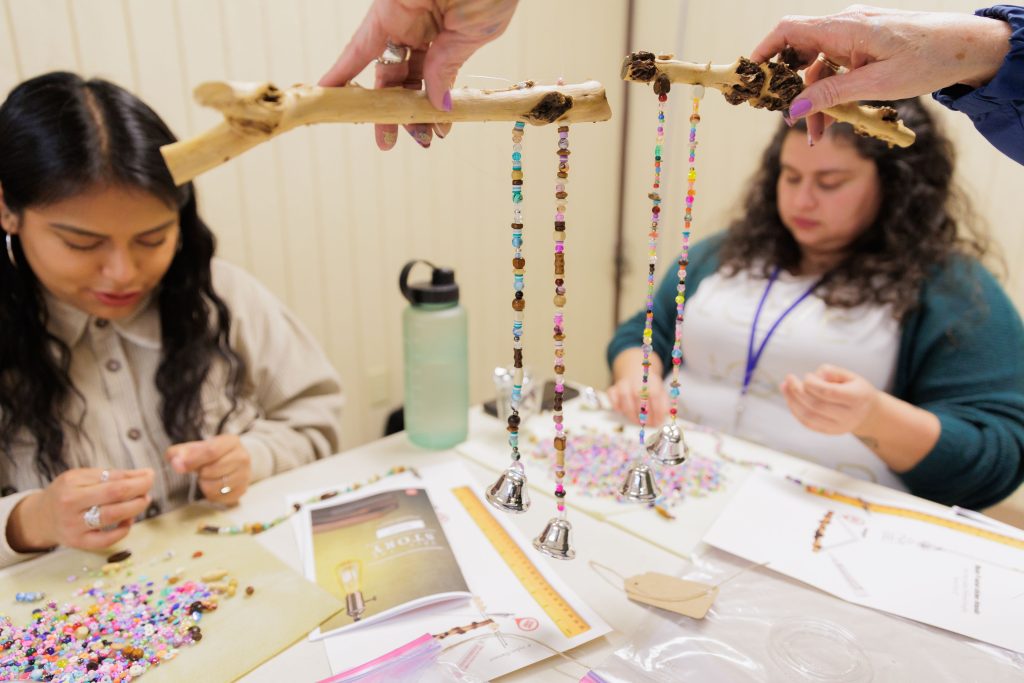
“Now corps have a way of thinking about [this],” Southwest Divisional Music Director Marlon Jones said. “The substance that we have is good…We just maybe need to change the way we present it.”
San Diego Kroc Center delegate Marina Winter said the conference offered “a lot of learning.”
“One of the main things was to understand how important it is to utilize creative arts as a way to transform people’s lives…in a form that doesn’t have to use language, so it can be universal,” she said. “And then we take this opportunity to send God’s message to heal, to show support and to show his love to everyone.”
Territorial Program Secretary Lt. Colonel Lisa Smith brought the message at Sunday’s worship service, encouraging listeners to become like little children before Jesus: fearless, free to take risks and express their creativity. She said that as God’s people, we are safe and secure, knowing his love is boundless.
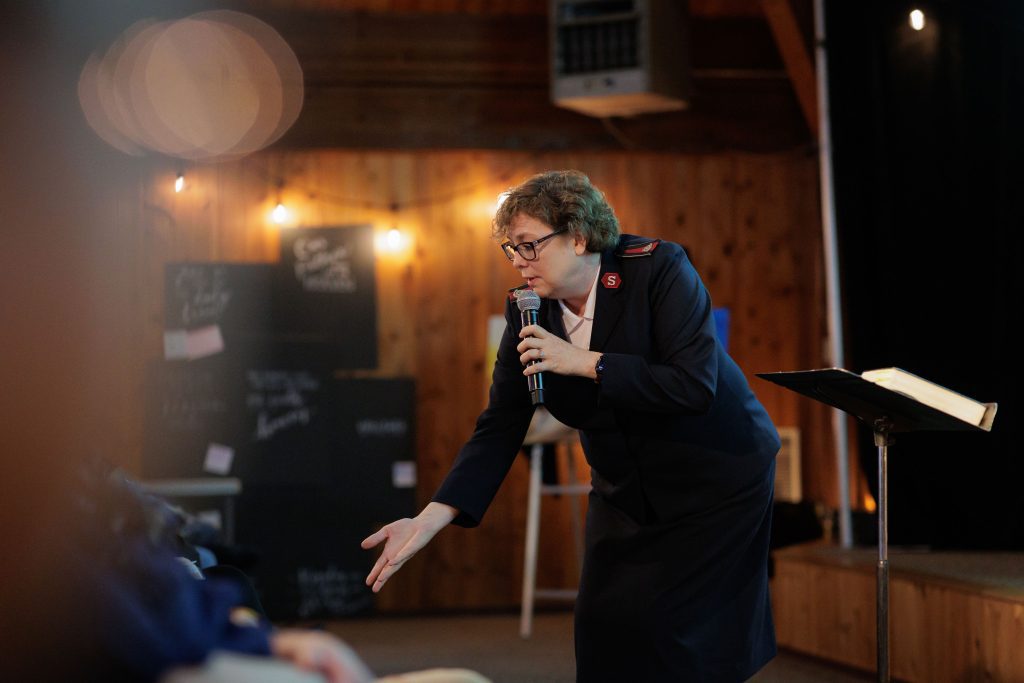
“We’ve risked this weekend, haven’t we?” Smith said. “My hope is that you may experience the powerlessness and poverty of a child [secure in their parents’ love] and sing and dance in the love of God. Even during hard times, there is always hope. There is love, joy and peace, and we can sing and dance…Tell the kingdom story. Tell your kingdom story. We have a choice every day what story we’re going to tell by our art, by what we say or how we treat people—by what we choose. Choose the story of Jesus, find the kingdom story—live it and tell it.”
Territorial Music Director Neil Smith closed the conference.
“Don’t forget what you’ve learned,” he said. “It’s important that we meet in our own spheres, wherever we are, to just keep encouraging…keep up the great work across our fabulous territory.”
Do Good:
- Tell people who you are, what you’re passionate about and why you care. Find confidence, healing or simply the satisfaction of finding your voice, owning your story and sharing it with others. Sign up for our free email course and get started today.
- Caring Magazine is a magazine from The Salvation Army for people who care. People like you! Subscribe to the list and join 21k+ people who care. You’ll get weekly inspiration sent right to your inbox in the Do Good Digest.
- Read more about how The Salvation Army shares God’s love through the creative arts.








